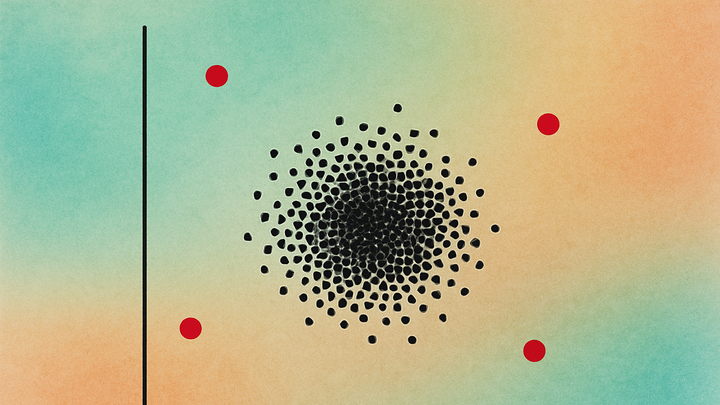Published on 2025-06-26T05:25:37Z
What is an Outlier in Analytics?
Outliers are individual data points that differ dramatically from the rest of a dataset’s values. In analytics, they often manifest as unexpected spikes or drops in metrics like sessions, conversions, or pageviews. These anomalies can result from measurement errors, unusual user behavior, or genuine events such as a viral campaign. Failing to address outliers can skew averages, distort trend analyses, and lead to misguided business decisions. Conversely, investigating outliers can uncover critical insights—such as emerging opportunities or systemic issues. Tools like Google Analytics 4 (GA4) provide built-in anomaly detection in Explorations, while lightweight, cookie-free solutions like PlainSignal allow for easy monitoring of traffic deviations. Understanding, detecting, and managing outliers ensures your analytics reflect a true picture of user behavior and performance.
Outliers
Data points that deviate vastly from others; in analytics, outliers can skew insights or reveal important events.
Understanding Outliers
This section defines outliers in the context of analytics, explains the difference between upper and lower outliers, and discusses why they can arise. Understanding the nature and types of outliers helps in choosing appropriate methods for detection and handling. Recognizing the reasons behind outliers (such as data entry errors or genuine unusual events) is the first step toward accurate analysis.
-
Definition of outliers
Data points lying well outside the expected range or statistical distribution, often beyond thresholds like mean ± 3 standard deviations or IQR bounds.
-
Upper outliers
Values significantly higher than the rest of the data, possibly indicating traffic surges, bot activity, or tracking errors.
-
Lower outliers
Values significantly lower than the norm, which could be caused by downtime, network issues, or data collection gaps.
-
-
Types of outliers
Outliers can be classified as global, contextual, or collective, each requiring different detection techniques.
-
Global outliers
Points that deviate from the overall dataset without context, such as an unexpected spike in daily sessions.
-
Contextual outliers
Points considered abnormal only in a specific context or timeframe, like a sudden drop during peak hours.
-
Collective outliers
A group of data points that collectively deviate from normal patterns, such as a prolonged period of low engagement.
-
-
Why outliers matter
Outliers impact key metrics by skewing averages, hiding real trends, or inflating variance. Identifying them preserves data integrity and uncovers actionable insights when genuine events cause anomalies.
Detecting Outliers
This section covers statistical, visual, and machine learning methods for identifying outliers in your analytics data.
-
Statistical methods
Common approaches include Z-score thresholds and the Interquartile Range (IQR) method for flagging extreme values.
-
Z-score
Calculates how many standard deviations a value is from the mean; values beyond ±3 often considered outliers.
-
Iqr method
Defines outliers as points outside 1.5×IQR above the third quartile or below the first quartile.
-
-
Visualization techniques
Visual tools like boxplots and scatter plots make it easy to spot data points that fall outside the main cluster.
-
Boxplots
Shows data distribution and highlights values outside the whiskers as potential outliers.
-
Scatter plots
Displays relationships between variables to reveal isolated points separate from the bulk.
-
-
Machine learning approaches
Algorithms like isolation forests and density-based methods detect anomalies without rigid statistical thresholds.
-
Isolation forest
Ensembles of decision trees isolate anomalies based on their shorter path lengths.
-
Dbscan
Density-based clustering marks low-density points as outliers.
-
Handling Outliers
Strategies for treating outliers vary based on their cause and impact. This section explores removal, transformation, capping, and imputation techniques.
-
Removal
Excluding outlier records entirely to prevent skewing analyses. Appropriate when outliers result from errors.
-
Transformation
Applying transformations like log or Box-Cox to reduce the impact of extreme values.
-
Capping and flooring
Limiting values to a specified maximum or minimum threshold (Winsorizing) to contain extreme data points.
-
Imputation
Replacing outlier values with estimated or mean values when removal isn’t viable.
Outliers in SaaS Analytics Tools
Practical examples of detecting outliers using PlainSignal and Google Analytics 4.
-
Detecting outliers with PlainSignal
To implement PlainSignal tracking and observe unusual spikes or dips, add this snippet to your site:
<link rel="preconnect" href="//eu.plainsignal.com/" crossorigin /> <script defer data-do="yourwebsitedomain.com" data-id="0GQV1xmtzQQ" data-api="//eu.plainsignal.com" src="//cdn.plainsignal.com/plainsignal-min.js"></script>Then monitor your PlainSignal dashboard for session counts that deviate significantly from the norm.
-
Analyzing outliers in google analytics 4
In GA4, navigate to Explorations > Free Form and enable Anomaly Detection in metric settings. GA4 will automatically flag data points that deviate from expected trends. Adjust sensitivity sliders to fine-tune alerts and use segmentation to drill down into anomalous user events or traffic sources.
